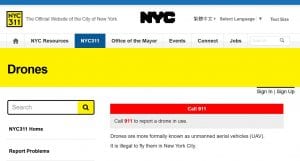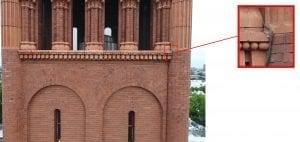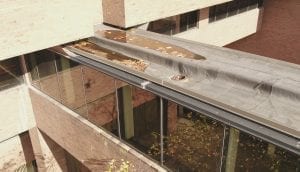Unmanned Aerial Vehicles (UAVs or “drones”) are everywhere—from assisting first responders to delivering pizza. Everywhere, that is, except in New York City. You may have heard that drone use is prohibited within the five boroughs. That’s essentially true,* thanks to a 1948 law that requires all aircraft to take off and land only from airports, as well as FAA restrictions on airspace that eliminate most of the skies over the Big Apple. But for SUPERSTRUCTURES and our clients, this ban is a barrier to using drones for facade inspections through methods like our SurfaceCapture,SM which relies on UAVs to help us create high-resolution scans of a facade for off-site assessment.

We were surprised by the notes of skepticism from our competitors in a recent Wall Street Journal article, questioning both the effectiveness of the technology and the likelihood that the current ban would ever be lifted. Developers are lobbying to allow drone use to make LL11 inspections easier, but that doesn’t mean it’s a play to cut corners. We see it as the future of facade inspections, reducing costs (up to one-tenth the cost of rigging an entire building), time to completion, and the risk to personnel posed by rigging. Furthermore, there simply isn’t enough rigging or trained people to cover all LL11 inspection needs and drones can be part of the solution.

Part of the solution is a key distinction here. Drones don’t fully or automatically replace visual or hands-on inspections. Rather, they can be the first step to help assess the overall condition of a facade and identify areas to scrutinize more closely. Materials such as terra cotta and concrete are susceptible to spalling (chipping from within the material) and typically should be inspected by hand using a technique called “sounding.” But such important exceptions aren’t reason to throw the drones out with the bath water.

We’ve used drones effectively outside of New York City to inspect facades such as the Chemistry building at SUNY Stony Brook, avoiding costly rigging and disruption to the life of the campus. As we await the City’s decision on UAV use, we have three drones ready for takeoff and six in-house pilots with their FAA 107 certification qualified to fly them.
*Recreational use of drones is allowed in five City parks with designated areas for model aircraft operation.
14 Wall Street, 25th Floor, New York, NY 10005
(212) 505 1133
info@superstructures.com
Subscribe to SuperScript, our email newsletter.